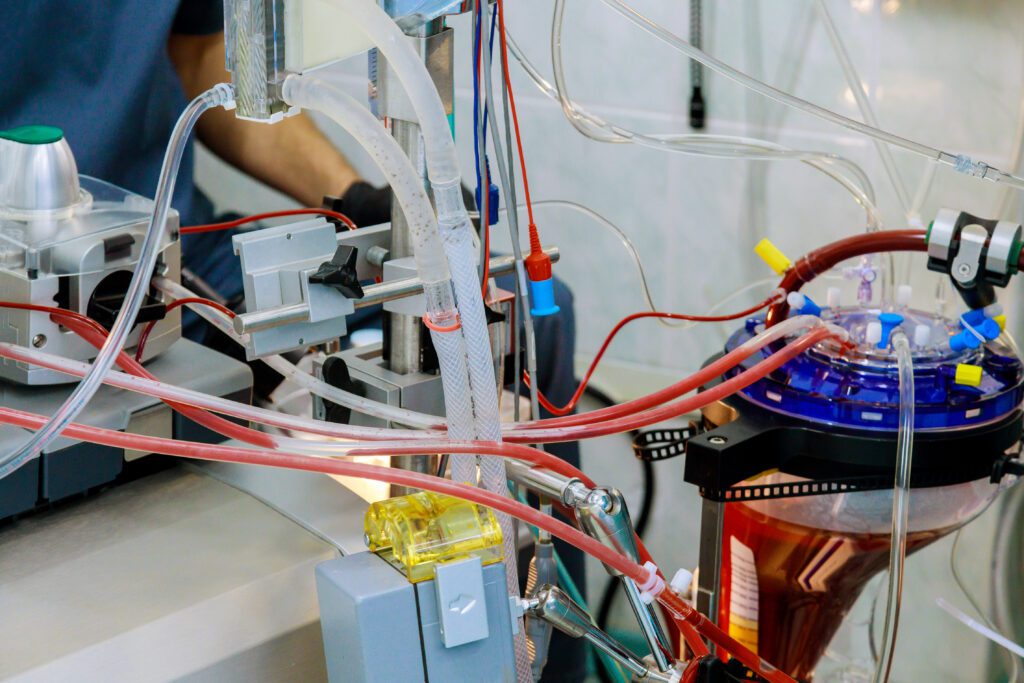Cannulae are indispensable in modern medicine, serving as lifelines for procedures such as extracorporeal membrane oxygenation (ECMO), hemodialysis, and cardiopulmonary bypass. However, their interaction with blood presents challenges, including thrombosis, hemolysis, and biofouling. This article explores the critical role of surface coatings in overcoming these challenges, focusing on the enhancement of cannula performance through improved flow dynamics and biocompatibility. Advances in hydrophilic, nitric oxide-releasing, and biomimetic coatings are discussed as transformative innovations for optimizing cannulae in various clinical settings.
Cannulae are vital components in modern healthcare, designed to facilitate fluid and blood transfer in critical medical procedures. Their use is prevalent in extracorporeal membrane oxygenation (ECMO), hemodialysis, and cardiopulmonary bypass, where they handle large volumes of blood. Despite their importance, the interaction of cannulae with blood often leads to complications such as clot formation, red blood cell damage, and microbial contamination. These issues underscore the need for innovative solutions, particularly in surface modifications, to enhance their performance and compatibility.
Hemodynamics and Cannulae

Hemodynamics, the study of blood flow and its interaction with vascular and artificial surfaces plays a critical role in determining the effectiveness of cannulae. Efficient blood flow through cannulae is essential to minimize turbulence, shear stress, and energy losses. Poorly optimized cannulae surfaces can disrupt flow, leading to complications like red blood cell damage (hemolysis), platelet activation, and clot formation.
Smooth flow dynamics within cannulae help prevent the activation of clotting mechanisms and reduce the risk of mechanical trauma to blood cells. By enhancing surface properties, advanced coatings improve flow patterns, promoting laminar flow while minimizing resistance and turbulence. This optimization not only enhances device performance but also ensures better patient outcomes.
Biocompatibility and Cannulae
Biocompatibility is the ability of a device or material to perform its function without causing adverse biological reactions. In cannulae, achieving biocompatibility is vital to minimize interactions with blood components that could lead to thrombosis, hemolysis, or immune responses.
A biocompatible cannula surface resists platelet adhesion and activation, reducing the risk of clot formation. It also minimizes red blood cell damage and prevents the activation of immune pathways that might lead to inflammation or rejection. Additionally, biocompatible coatings inhibit protein and microbial adhesion, reducing the risk of biofilm formation and infections. Advances in biomimetic materials, designed to replicate the properties of natural blood vessels, are setting new standards in cannula performance.
Innovative Coating Technologies for Cannulae
Advanced coating technologies are essential to address the challenges of blood-cannula interaction. Hydrophilic coatings create a water-attracting surface that reduces protein and platelet adhesion, ensuring smoother blood flow and minimizing clot formation. Nitric oxide-releasing coatings mimic the natural antithrombotic properties of vascular endothelium, actively preventing platelet aggregation and promoting thrombus-free flow.
Coatings, such as Smart Reactors’ Camouflage™, have a controlled interaction between non-inflammatory proteins and the coating which hides the device surface from circulating blood.
Zwitterionic materials, with their charge-neutral surfaces, resist protein adsorption and cellular adhesion, while antimicrobial coatings integrate agents that combat microbial colonization, ensuring prolonged device safety and functionality.
These coatings collectively improve the interaction between blood and cannulae, addressing both biological and mechanical challenges to enhance performance.
Applications of Coated Cannulae in Medicine
- Extracorporeal Membrane Oxygenation (ECMO): Coatings reduce hemolysis and clotting in high-flow environments, ensuring stable performance during prolonged extracorporeal support.
- Hemodialysis Access: Hydrophilic and antimicrobial coatings improve compatibility and safety, reducing complications in dialysis procedures.
- Cardiopulmonary Bypass: NO-releasing and biomimetic coatings enhance blood compatibility, preventing clot formation during surgery.
- Central and Peripheral Vascular Access: Coatings minimize infection risks and thrombotic complications in long-term vascular access devices.

Cannulae are indispensable in life-saving medical procedures, yet their interaction with blood presents significant challenges. Advanced surface coatings have revolutionized their design, addressing issues such as thrombosis, hemolysis, and biofouling while optimizing flow dynamics and biocompatibility.
By combining scientific precision with innovative material science, Smart Reactors’ Camouflage™ technology sets new benchmarks for coated cannula performance, improving safety and efficiency across a range of applications.
For more information about our cutting-edge solutions, contact us.
Share this post: on LinkedIn

